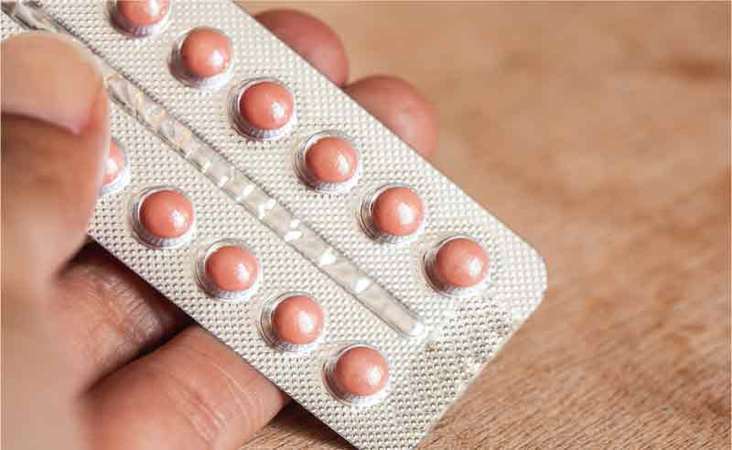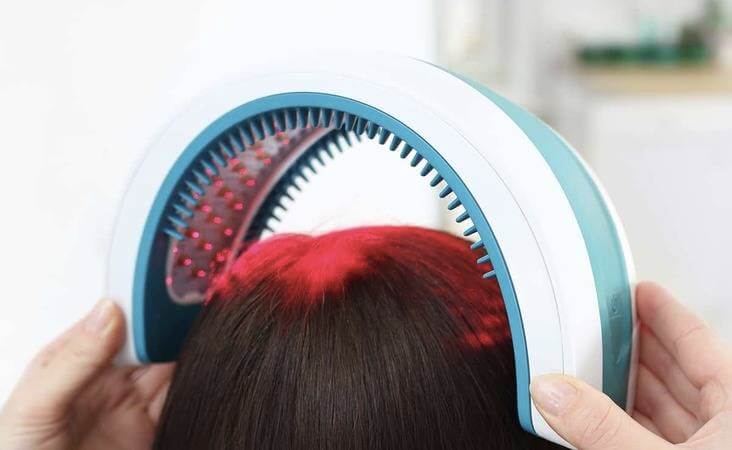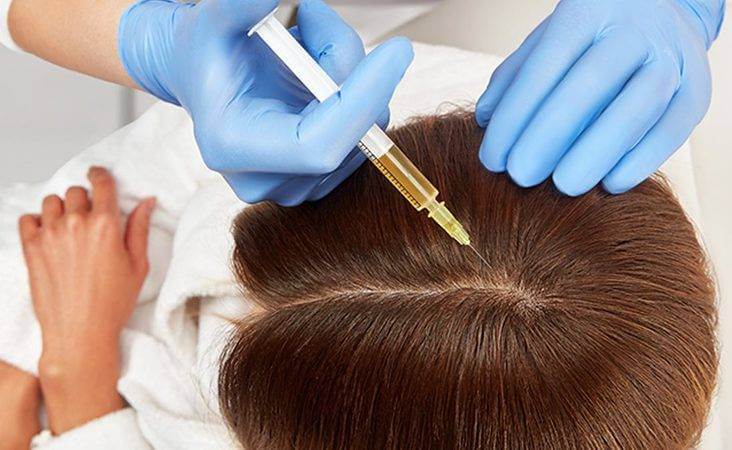Best Hair Restoration Methods That Actually Work [Non-Surgical]
- Written by Leo Lordhair
- Nov 8, 2021
- |
- 11 min read
 Listen to the full text
Listen to the full textIn the past decade, science has made big advancements in treating hair loss and damage done by thinning. In the past, men primariy used surgical hair restoration methods like strip harvesting and FUE for restoring hair. But now that new hair restoration procedures have been developed, there are a lot of less painful and risky hair recovery options to choose from.
Since we have talked about surgical hair replacement options in the past, we will list out non-surgical hair restoration methods this time. Let’s get started then!
Best hair restoration methods (non-surgical)
Here is our list of the best hair restoration procedures that will solve your hair problems without pain and discomfort:
Medications
Dermatologists recommend hair fall medications to men and women who have just started losing their hair and the damage to strands is minimal. That’s why we thought it would be better to start our list with this non-surgical hair restoration method:
#1 Finasteride: It is one of the best medications for men to preserve and regrow their hair. According to Jane F. Kardashian, 80% of men who used this hair restoration treatment as a 1 mg tablet were able to preserve their original hair follicle counts.
This non-surgical hair restoration procedure works by reducing the level of a natural hormone called DHT in the human body. Reduction in the quantity of DHT leads to acceleration of hair regrowth and diminution of hair loss.

#2 Minoxidil: Unlike Finasteride, Minoxidil can be used by both men and women. No wonder this hair restoration medication has gained more popularity in recent years. Although the workings of Minoxidil are still a mystery for many dermatologists, it’s believed that it works by dilating the blood vessels.
When the blood vessels dilate, they deliver oxygen and vital nutrients to the follicles faster. Available as foam and liquid, this medication-assisted method of hair restoration comes in two concentrations - 2% and 5%.
Hate medication? Check out our collection of men’s hairpieces
#3 Spironolactone: Another effective method of hair restoration, Spironolactone is best known for slowing down the generation of androgens (male sex hormones). Lowered generation of androgens declines the progression of hair loss caused by androgenic alopecia.
A study done by JAAD (Journal of the American Academy of Dermatology) stated that 75% of women with pattern hair loss noticed an improvement in their hair loss after taking spironolactone.

The above non-surgical hair replacement treatments are popular and effective but they have their share of side effects. Some of them include:
- Scalp irritation
- Eczema
- Decreased sex drive
- Redness
- Inflammation
- Dizziness
- Weakness
Expert tip: Get a prescription approved by a dermatologist before using any of these medications.
Hair replacement systems
Unlike the above hair restoration methods, a hair replacement system has no negative side effects. That’s the reason why we have decided to make it second to our list! A hair system is made of human hair, hand-woven onto a premium base that’s skin-friendly and invisible after application on the scalp.
To some, a hair system and wig are the same but there is a difference between the two. A hair system is used primarily to refer to a modern type of wig that is superior to a wig in terms of quality and realness. While most wigs are taken off at the end of the day, hair systems (also known as toupee hair replacement systems) can be attached to the scalp for many weeks and retained without compromising realness with minimal touch-ups. Most people may spend about 10 minutes a week touching up the front, and deep cleaning once a month only.
Benefits of hair replacement systems
A hair replacement system comes with many benefits. Here are some of them:
- Delivers instant results
- Semi-permanent in terms of attachment: you don't have to take it off every night
- Not time-consuming to attach
- Highly cost-effective: a year’s supply of hair systems can cost less than US$1000
- Comfortable, breathable, and durable.
Browse our collection of premium hairpiece toupees and toppers for women.
Low-level laser therapy (LLLT)
A non-surgical hair restoration procedure, low-level laser therapy (LLLT) involves the use of a pencil-like beam of electromagnetic waves set at a single frequency and defined wavelength to promote hair growth on the scalp.
Effective for both men and women, low-level laser therapy works by:
- Relocating hair strands from telogen phase back to anagen phase.
- Extending the time span of the anagen phase.
- Boosting hair growth rates in anagen phase follicles.
- Putting a stop to premature catagen phase development.
Other than restoring hair, this non-surgical treatment is also used to support healing from various other medical conditions and revival of vital bodily functions.
Laser cap
A pencil-beam treatment isn’t the only non-surgical hair restoration procedure to fix hair loss. Men and women can also use laser-based devices like caps, hats, helmets, or headbands for hair restoration. They feature delicate lasers discharging photons that can easily penetrate the scalp while targeting the follicles.
They increase adenosine triphosphate (ATP) production in the hair follicle cells, promoting hair growth and metabolism. Although many laser caps in the market have FDA approval, we still suggest taking a prescription from a dermatologist before using it for your hair recovery.

Platelet-rich plasma (PRP)
We bet many of you haven’t heard about this hair restoration method. Platelet-rich plasma (PRP) is a non-surgical procedure designed to help with regeneration and healing. This treatment was widely used to speed up healing in the past. Nowadays, scientists are using it to restore hair growth. Platelet-rich plasma is a three-step process:
- First, your blood will be drawn from your arm and put into a centrifuge.
- Your blood will then separate into three layers after about 10 minutes in the centrifuge. Those layers are platelet-poor plasma, platelet-rich plasma, and red blood cells (RBCs).
- The platelet-rich plasma will be drawn up into a syringe and injected into areas of your scalp that require hair growth.
Since this hair restoration procedure involves the use of injections, a lot of men and women avoid this hair recovery medium. There are also some side effects associated with PRP:
- Injuries to blood vessels and nerves
- Scalp infection
- Scar tissues
Mesotherapy
Our list of best hair restoration methods would be considered incomplete without talking about this non-surgical hair replacement treatment. Mesotherapy is a procedure of providing the scalp with a good amount of vitamins and improving blood flow to boost hair growth. It is widely used to treat bald patches and set follicles in motion to trigger hair regrowth.
Just like platelet-rich plasma (PRP), mesotherapy also involves the use of microinjections. This hair restoration method is rather new and has generated benefits for a limited number of people in comparison to popular recovery procedures.

Dermarolling
Dermarolling is another non-surgical method for hair restoration that involves the use of a handheld tool with a small roller called a derma roller. It is moved on the scalp to make tiny apertures with fine microneedles. Dermarolling makes it easier for the medicinal qualities of topicals and oils to reach the hair follicles.
Just like any other non-surgical hair restoration method that we discussed above, derma rolling is also effective in putting a stop to hair loss and boosting hair growth. Worried those needles will damage your scalp? No need to be! A derma roller will pierce only deep enough to promote circulation and regeneration of cells.
While derma rolling has benefited tens of thousands of men and women experiencing hair loss, it has till now generated limited benefits for pattern baldness.
Everything you need to know about dermarolling for hair loss.
A healthy, balanced diet
The key to smooth, strong, and shiny hair lies in a healthy, balanced diet. While it cannot cure age-related hair loss, it can help men and women counter hair loss that is triggered by poor lifestyle and dietary gaps.
Pay particular attention to these foods while planning a healthy diet for hair restoration:
- Lean meats
- Nuts and seeds
- Leafy greens
- Seasonal fruits
- Complex grains
Note: You don't need to go on an extreme diet like professional athletes. Also, you don’t have to get rid of all the foods that you love. Just embrace a healthier lifestyle in general and your hair health will automatically improve.

Above are the best non-surgical hair restoration methods to try in 2021. Wondering which method is right for you? The truth is, the benefit will depend on your hair loss type, hair fall stage, existing medical conditions, and many other factors. Some may benefit from a mix of minoxidil and an active lifestyle while others may get limited results from them.
What you need to do is to take your time, do research on different hair restoration methods, talk with a dermatologist, and make an informed decision. If you decide any type of medicine or changes to the skin is not for you, a hair system is one of the best natural methods that will not change any hormones or cells in your body and it is simply something that sits on top of your head.
Got any queries? Send them to support@lordhair.com and have them answered by our hair experts.
Also read:
Unprocessed human hair wigs to buy in 2022
Healthy foods to prevent hair loss
Minoxidil’s common side effects
Medically proven side effects of Finasteride


